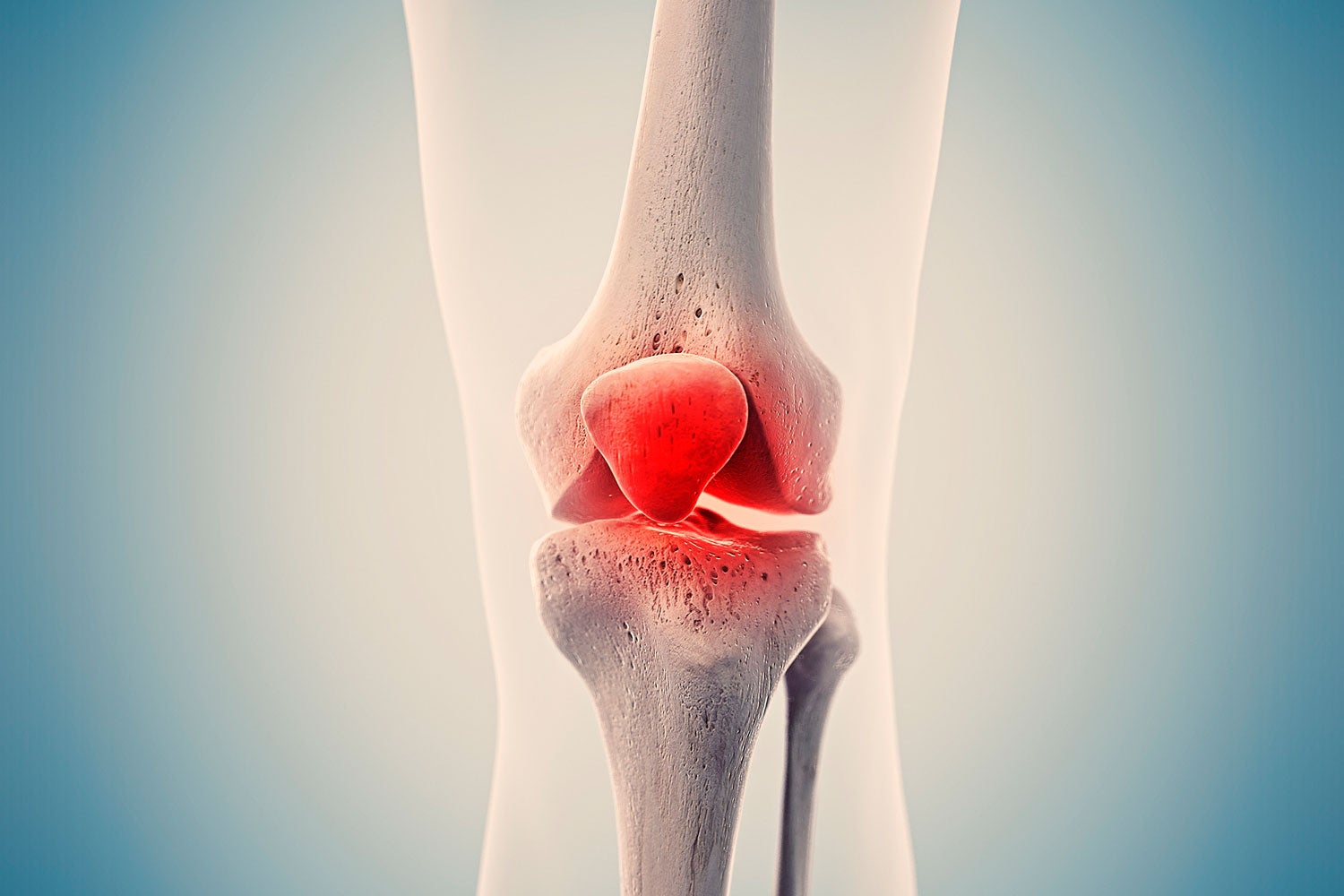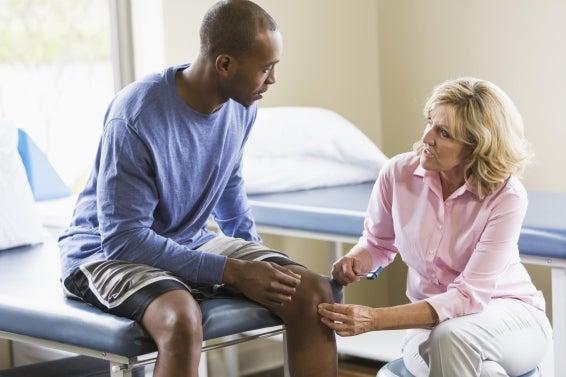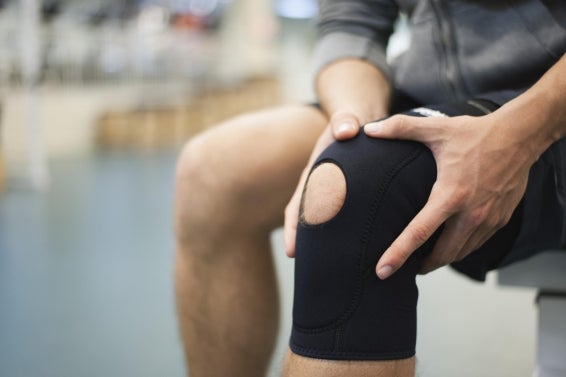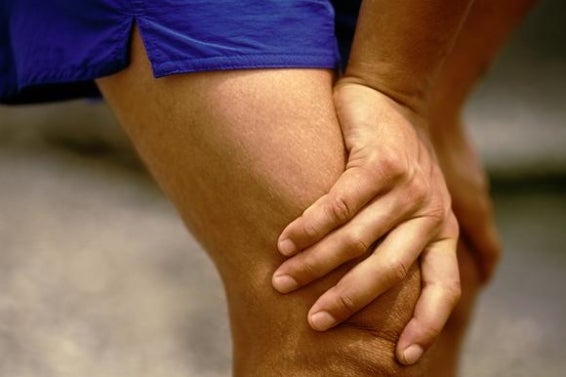Chronic Knee Pain
Chronic Knee Pain
What is knee pain?
Knee pain is one of the most common reasons for doctor visits. The knee is the joint where the kneecap (patella), thighbone (femur) and bones of the lower leg (tibia and fibula) meet. Your knees are also comprised of skin, muscles, tendons, cartilage, ligaments, nerves and blood vessels, all of which are subject to injury, infection and other painful conditions.
Ligaments hold together the bones that make up the knee joint. Cartilage is a protective, slippery tissue that covers the ends of bones and allows the knee joint to move smoothly. Nerves control sensation and movement, and blood vessels ensure continuous blood circulation to and from the knees and legs. Healthy knees ensure stability and flexibility of the leg and enable movement of the lower leg.
Knee pain can be acute, develop suddenly, and disappear quickly, or it may build gradually over a long period of time. Chronic knee pain can last for several weeks to months or longer. Knee pain may feel dull and achy, throbbing, piercing or tingling. You may also experience knee stiffness or paresthesias, painlike sensations often described as pins and needles, prickling or burning. Knee pain may be simply irritating and uncomfortable or so debilitating that you cannot put weight on your leg or walk.
The severity of knee pain may vary, depending on the cause. Knee pain can be caused by a very wide variety of conditions, including normal growth and aging. Knee pain caused by a minor sprain or contusion may disappear with home treatments, such as rest, ice, elevation of the leg and medications.
In some cases, knee pain may be caused by a serious or life-threatening condition, such as deep vein thrombosis, knee infection, fractur or dislocation. Seek immediate medical care (call 911) if you, or someone you are with, have difficulty moving the leg or walking; deformity of the knee, lower leg, or thigh; severe pain; severe swelling; or color changes in the knee or leg.
Symptoms
What other symptoms might occur with knee pain?
Knee pain can develop along with other symptoms, which vary depending on the underlying disease, disorder or condition. Additional symptoms can involve other body systems or areas, such as the cardiovascular and neurological systems. Other symptoms that may accompany knee pain include:
-
Bleeding
-
Bruising, laceration or abrasion
-
Burning or prickling feeling
-
Change in gait such as limping
-
Flu-like symptoms (fatigue, fever, sore throat, headache, cough, aches and pains)
-
Inability to flex or straighten the knee
-
Muscle spasms
-
Redness, warmth in joint
-
Reduced range of motion or knee stiffness
-
Swelling
-
Thigh, lower leg, ankle or hip pain
-
Tingling, pain or other abnormal sensations in the toes
Symptoms that might indicate a serious or life-threatening condition
In some cases, knee pain may occur with other symptoms that might indicate a serious or life-threatening condition, such as deep vein thrombosis, which is a blood clot in the leg that can travel to the lungs and cause a life-threatening pulmonary embolism. Other serious conditions include fracture, dislocation or infection. Seek immediate medical care (call 911) if you, or someone you are with, have other serious symptoms, with or without knee pain, including:
-
Change in consciousness or alertness, such as fainting
-
Chest pain
-
Difficulty breathing, wheezing or shortness of breath
-
Discolored, unusually pale or cold leg
-
Inability to walk or put weight on your leg
-
Popping sound at time of injury
-
Red streaks around a tender area or lump
-
Red, warm and swollen area of the leg
-
Severe pain
-
Severe swelling or deformity of the knee, lower leg or thigh
Causes
What causes knee pain?
There are many diseases and conditions that can cause knee pain, but the leading causes are typically related to physical activity, such as overuse, injury and age-related wear and tear on the muscles, cartilage, tendons and ligaments of the knee.
Trauma- and injury-related causes of knee pain
Knee pain may be caused by injuries and trauma-related problems including:
-
Bleeding within the joint space (hemarthrosis)
-
Bone fracture (broken bone) or knee dislocation, especially of the patella (kneecap)
-
Bursitis (also described as “housemaid’s knee,” which is caused by kneeling on hard surfaces, leading to inflammation of the sacs cushioning the knee)
-
Fragments of bone or cartilage within the joint space
-
Laceration, abrasion or contusion of the knee
-
Ligament sprains and tears, especially of the anterior cruciate ligament (ACL) and medial collateral ligament (MCL) of the knee, which ensure leg and knee stability
-
Meniscus tear (tear in the shock-absorbing cartilage of the knee)
-
Osgood-Schlatter disease (painful swelling of the anterior tibial tubercle, the bump on the front, upper part of the lower leg bone, that occurs in growing adolescents due to overuse)
-
Runner’s knee (kneecap pain usually due to overuse or injury)
-
Tendinitis (inflammation or irritation of tendons due to overuse or injury), such as patellar tendinitis
-
Tendon avulsion or fracture (tendon rupture or pulling away from the bone), such as that of the biceps femoris tendon or quadriceps tendon
Infectious causes of knee pain
Knee pain can be caused by various infections including:
-
Abscess
-
Cellulitis (invasive infection of the skin and surrounding tissues)
-
Infection of a knee wound or sore
-
Infection of the knee joint (septic arthritis)
-
Osteomyelitis (bone infection)
Neurological causes of knee pain
Knee pain can be caused by neurological conditions that trigger inflammation, entrapment, compression or damage to the nerves including:
-
Peripheral neuropathy (disorder that causes damage and dysfunction of nerves that lie outside the brain and spinal cord) and diabetic neuropathy (neuropathy caused by long-term diabetes)
-
Piriformis syndrome (buttock muscle compressing or irritating the sciatic nerve, causing pain, tingling or numbness down the leg)
-
Sciatica (compression, injury or inflammation of the sciatic nerve, which causes burning or shooting pain running from the buttocks down the back of the leg)
Other causes of knee pain
Other causes of knee pain include:
-
Arthritis, including osteoarthritis, rheumatoid arthritis and gout
-
Baker’s cyst (fluid-filled cyst behind the knee)
-
Certain connective tissue disorders, such as lupus
-
Deep vein thrombosis (blood clot in the leg that can break loose from the leg, causing a pulmonary embolism in the lung, heart attack or stroke)
-
Fibromyalgia (chronic condition causing widespread muscular pain, stiffness and tenderness)
-
Retained foreign body
Questions for diagnosing the cause of knee pain
To diagnose your condition, your doctor or licensed health care provider will ask you several questions related to your symptoms including:
-
In what part of the knee do you feel pain?
-
When did the pain start?
-
How long does the pain last?
-
Are there any activities that cause the pain?
-
Are you experiencing any other symptoms?
What are the potential complications of knee pain?
Complications of knee pain can vary depending on the underlying cause. Pain due to a minor condition, such as a mild muscle strain or bruise, usually responds to rest, ice and over-the-counter anti-inflammatory medications. However, some underlying causes of knee pain, such as a joint infection or deep vein thrombosis, can lead to serious and possibly life-threatening complications including:
-
Adverse effect of treatment
-
Chronic pain
-
Difficulty walking
-
Disability
-
Loss of hip or knee joint mobility
-
Paralysis
-
Permanent joint instability
-
Permanent loss of sensation
-
Permanent nerve damage
-
Poor quality of life
-
Pulmonary embolism associated with deep vein thrombosis
-
Spread of infection and serious infections, such as gangrene, which can lead to amputation
-
Weakness or paralysis
It is important to contact your health care provider when you have persistent pain or other unusual symptoms. Once the underlying cause is diagnosed, following the treatment plan outlined by your health care provider can lower your risk of complications.





